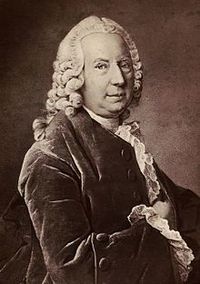Difference between revisions of "Main Page"
| (24 intermediate revisions by the same user not shown) | |||
| Line 1: | Line 1: | ||
<!-- BANNER ACROSS TOP OF PAGE --> | <!-- BANNER ACROSS TOP OF PAGE --> | ||
<div id="mp-topbanner" style="clear:both; position:relative; box-sizing:border-box; width:100%; margin:1.2em 0 6px; min-width:47em; border:1px solid #ddd; background-color:#f9f9f9; color:#000; white-space:wrap;"> | <div id="mp-topbanner" style="clear:both; position:relative; box-sizing:border-box; width:100%; margin:1.2em 0 6px; min-width:47em; border:1px solid #ddd; background-color:#f9f9f9; color:#000; white-space:wrap;"> | ||
| − | <!-- "WELCOME TO FLOWPEDIA" AND ARTICLE COUNT --> | + | <!-- "WELCOME TO FLOWPEDIA KNOWLEDGE - KNOWLEDGE" AND ARTICLE COUNT --> |
| − | <div style="margin:0.4em; width: | + | <div style="margin:0.4em; width:30em; text-align:center;"> |
| − | <div style="font-size:162%; padding:.1em;">Welcome to [[Flowpedia]],</div> | + | <div style="font-size:162%; padding:.1em;">Welcome to [[Flowpedia- Knowledge]],</div> |
| − | <div style="font-size:95%;">the [[ | + | <div style="font-size:95%;">the [[Rainwater Drainage]] encyclopedia.</div> |
<div id="articlecount" style="font-size:85%;">[[Special:Statistics|{{NUMBEROFPAGES}}]] articles in [[English language|English]]</div> | <div id="articlecount" style="font-size:85%;">[[Special:Statistics|{{NUMBEROFPAGES}}]] articles in [[English language|English]]</div> | ||
</div> | </div> | ||
| − | ==Featured | + | |
| + | ==Featured Articles== | ||
| + | *[[Gravity Drainage System (Roof Drainage)]] | ||
| + | *[[Siphonic Drainage System]] | ||
| + | *[[Rainwater]] | ||
| + | *[[Free Fall (Roof Drainage System)]] | ||
| + | *[[Full-bore Flow]] | ||
| + | |||
| + | |||
| + | ==Featured Picture== | ||
[[File:Bernoulli_Daniel.jpg|thumb|left|200px]] | [[File:Bernoulli_Daniel.jpg|thumb|left|200px]] | ||
[[Daniel Bernoulli]] | [[Daniel Bernoulli]] | ||
| − | (8 February 1700 -17 March 1782) | + | (''8 February 1700 -17 March 1782'') |
A Swiss mathematician and a physicist. | A Swiss mathematician and a physicist. | ||
| Line 19: | Line 28: | ||
He is particularly remembered for his applications of mathematics to mechanics especially fluid mechanics and pioneering work in probability and statics. | He is particularly remembered for his applications of mathematics to mechanics especially fluid mechanics and pioneering work in probability and statics. | ||
| − | [[Bernoulli's Equation]] is one of the fundamental equations of fluid mechanics and is the primary equation upon which [[Siphonic | + | [[Bernoulli's Equation]] is one of the fundamental equations of fluid mechanics and is the primary equation upon which [[Siphonic Drainage System]] design is based. |
<br clear=all> | <br clear=all> | ||
| − | |||
[[File:Bernoulli_Daniel_HYDRODYNAMICA.jpeg|thumb|left|200px]] | [[File:Bernoulli_Daniel_HYDRODYNAMICA.jpeg|thumb|left|200px]] | ||
[[Hydrodynamica]] was published in 1738, by Daniel Bernoulli. In this book Bernoulli presented the earliest adequate theory of motion of an incompressible fluid in tubes (vessels) and fluid outflow through orifices, introducing the notion of the hydro-dynamic pressure. However, the treatise is not restricted to theoretical hydraulics. In the subsequent sections, he opens up new branches of physics and mechanics. | [[Hydrodynamica]] was published in 1738, by Daniel Bernoulli. In this book Bernoulli presented the earliest adequate theory of motion of an incompressible fluid in tubes (vessels) and fluid outflow through orifices, introducing the notion of the hydro-dynamic pressure. However, the treatise is not restricted to theoretical hydraulics. In the subsequent sections, he opens up new branches of physics and mechanics. | ||
| − | Hydrodynamica is founded mainly on the principle of conservation of ‘living forces’ (that is, kinetic energy). Bernoulli preferred to use this principle not in its traditional form, received hostility by Newtonians, but in | + | Hydrodynamica is founded mainly on the principle of conservation of ‘living forces’ (that is, kinetic energy). Bernoulli preferred to use this principle not in its traditional form, received hostility by Newtonians, but in Christiaan Huygens formulation that Bernoulli named the principle of equality between the actual descent and potential ascent: ‘If any number of weights begin to move in any way by the force of their own gravity, the velocities of the individual weights will be everywhere such that the products of the squares of these velocities multiplied by the appropriate masses, gathered together, are the bodies descends, multiplied by the masses of all of them’. |
<br clear=all> | <br clear=all> | ||
== Getting started == | == Getting started == | ||
